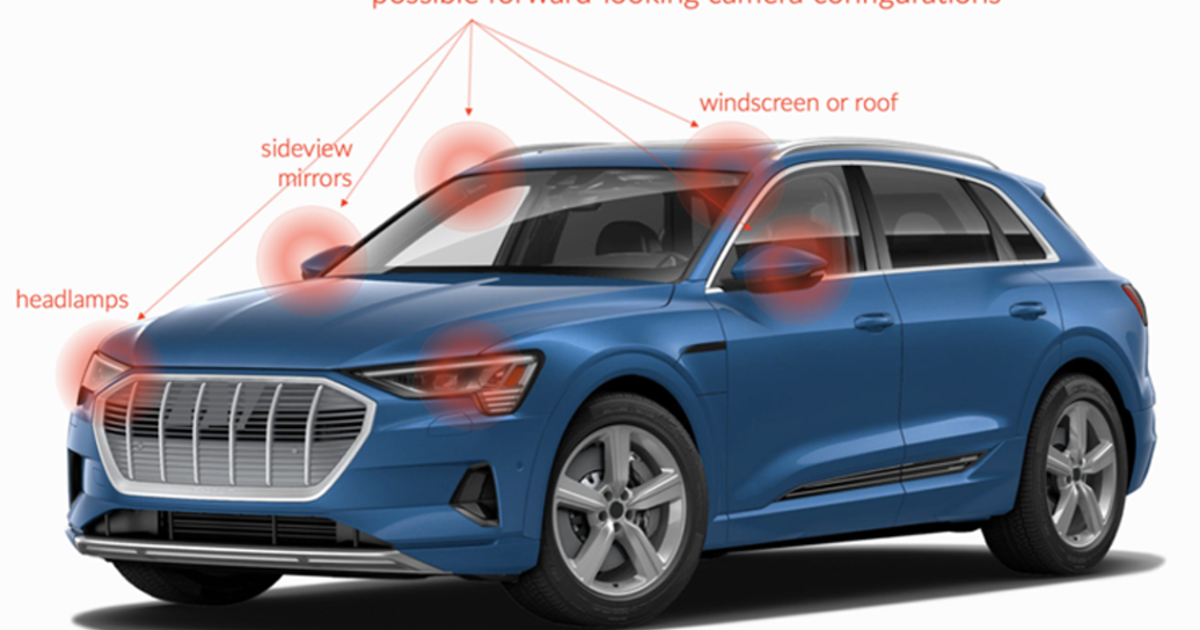
LAS VEGAS — As sensor technology underpins the auto industry’s push to produce more self-driving vehicles in the coming years, innovation will become a key differentiator among the many players.
While the industry faces hurdles, including global economic headwinds, rising borrowing rates, mergers, bankruptcies and shutdowns, it remains one of the main features at the sprawling CES technology show, filling much of Las Vegas Convention Center’s west wing.
Here are some of the more notable sensors at 2023 CES.
Lights, camera, action!
Executives from Nodar, a Boston area startup developing long-range, high-resolution, real-time 3D camera-based software, said the company’s technology can speed up the adoption of Level 3 autonomous driving. The industry considers Level 3 driving as vehicles that mostly drive themselves but still require a human driver present.
Nodar is competing with lidar companies and stereo visual systems from Bosch and Continental for vehicles with Level 3 capabilities, said COO Brad Rosen.
The company’s software, which uses existing automotive and geothermal camera technology, can accelerate the adoption of autonomous vehicles because it’s less expensive than lidar technology.
Automakers “can’t spend on an average car that has $30,000 in materials and throw a $1,500 lidar on it or multiple $1,500 lidars all around that car,” Rosen said.
Nodar, which won a 2022 Automotive News PACEpilot Award for its Hammerhead camera-based 3D vision platform, received $12 million in an April 2022 funding round led by venture capital firm New Enterprise Associates.
Israeli startup Adasky is also banking on geothermal cameras as a less costly alternative to lidar technology for autonomous vehicles, said Bill Grabowski, head of Adasky’s North America division.
3D Vision
Seoul Robotics unveiled its smart SENSR 3.0, which adds 3D capabilities to lidar sensor technology. Seoul Robotics has developed software for self-driving cars that relies on data only from lidar sensors rather than camera-based sensors. SENSR 3.0 uses artificial intelligence to track and detect hundreds of objects at once within an accuracy range of 4 centimeters, the company said.
It recently secured a $4.75 million project funded by the Federal Highway Administration to test SENSR 3.0 capabilities in Chattanooga, Tenn.
That data will help the city map out ideal locations for EV charging stations and devise driving routes that alleviate congestion and reduce vehicle emissions.
Bucking trends
Israel-based Opsys Tech, a lidar company backed by Hyundai, announced an additional $36.5 million of funding at CES. That brought its Series C funding total to $51.5 million. The financing included investments from 83North, Osage University Partners, Translink Capital, and Saban Ventures.
Opsys is developing what it calls “true Solid-State Scanning” lidar technology and is working with Belgium-based auto windshield designer Wideye to integrate lidar sensors in vehicle windshields.
One issue with lidar sensors is that many are installed in headlights, which provides an overheated environment. Some also have moving parts, which can lead to failures and required repairs. A solid-state single lidar sensor installed in a windshield could resolve those problems.
On the road
Gatik, a Mountain View, Calif., self-driving truck company is literally putting sensors on the road. The company is working with Goodyear to develop tire technology that estimates road friction and sends real-time information to Gatik’s automated driving system.
Called Goodyear SightLine, the technology measures wear, load, tire pressure and temperature. It combines that information with real-time weather data and custom rubber friction insights to determine tire-road friction and detect low-grip conditions.
“The tire is the only part of the vehicle that touches the ground, and this new level of data sophistication can communicate vital information to the vehicle,” said Chris Helsel, Goodyear’s chief technology officer.